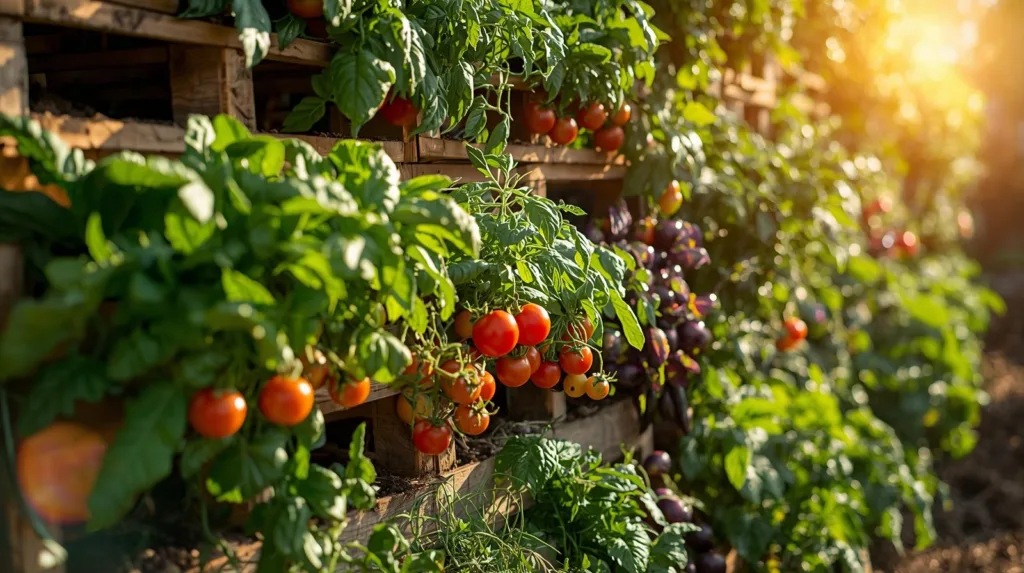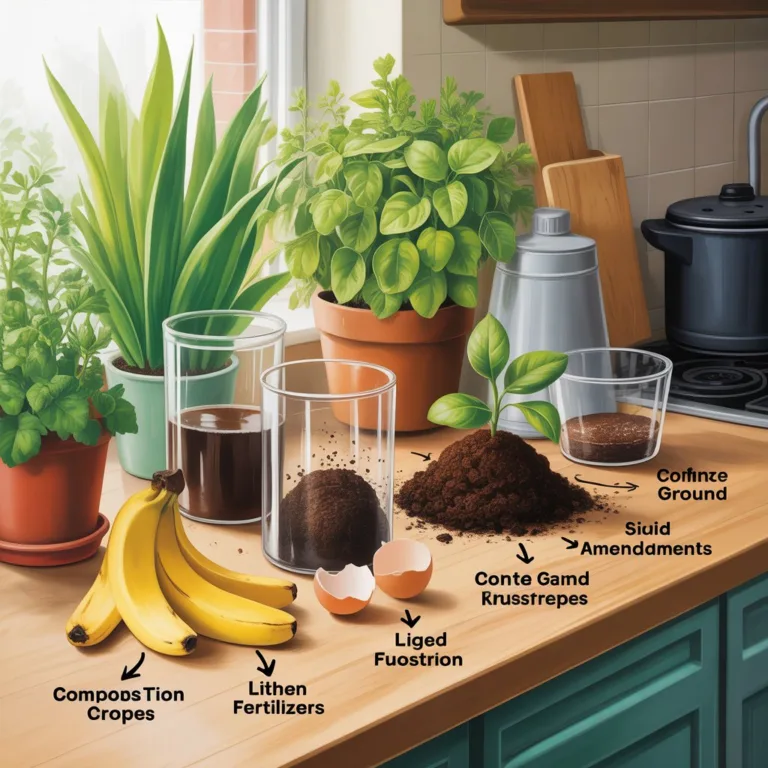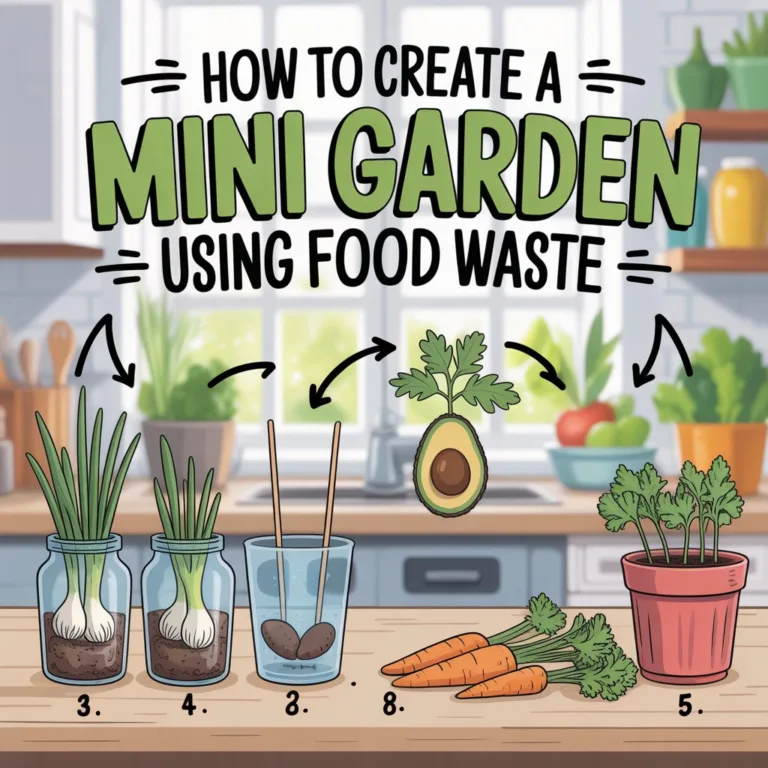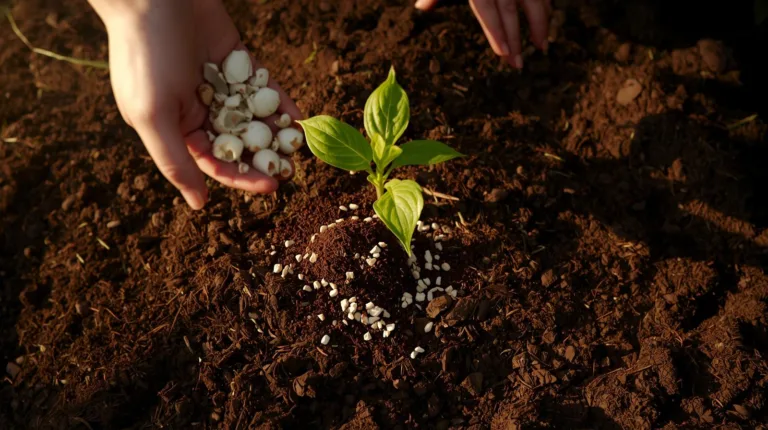Urban spaces are shrinking, but our desire to grow fresh, organic food is stronger than ever. Many people living in apartments or small houses think gardening is out of reach — but that’s far from true. Pallet gardening has emerged as one of the most creative and sustainable ways to grow vegetables vertically, even in tight spaces. With just a wooden pallet, a bit of soil, and your favorite vegetable seeds, you can transform any wall, balcony, or corner into a thriving vertical garden bursting with life.

This method doesn’t just save space; it promotes sustainability, reuses materials, and turns even the smallest area into a lush, productive oasis. Whether you’re a beginner or a seasoned gardener looking for a new project, pallet gardening offers endless opportunities to grow healthy vegetables in an eco-friendly way.
What Makes Pallet Gardening So Appealing
Pallet gardening combines functionality, aesthetics, and sustainability. Wooden pallets — often discarded by warehouses or stores — can easily be repurposed into vertical planters. They are durable, easy to find, and can be customized to fit any garden size.
For city dwellers or anyone with limited outdoor space, growing vegetables vertically with pallets maximizes efficiency. Instead of sprawling horizontally, plants climb upward, making full use of vertical walls and reducing clutter. The result is a garden that’s practical, beautiful, and surprisingly productive.
Key benefits of pallet gardening include:
- Space efficiency: Perfect for small patios, balconies, or rooftops.
- Recycling materials: Reduces waste and supports sustainable living.
- Easy accessibility: Less bending and kneeling, making gardening more comfortable.
- Pest control: Plants grown vertically are less prone to soil-borne pests.
- Aesthetic value: Pallet gardens bring natural beauty to urban environments.
Choosing the Right Pallet
Not all pallets are suitable for gardening. Before you start, it’s essential to select a pallet that’s safe for growing edible plants.
Look for HT-stamped pallets, which means they were heat-treated rather than chemically treated. Avoid pallets marked with MB (methyl bromide) — these were treated with harmful chemicals that can leach into your soil and plants.
Opt for sturdy, clean pallets made from hardwood if possible. If the pallet looks damaged, oily, or moldy, discard it. It’s better to start with a reliable structure that ensures your vegetables grow in a safe environment.
Tip: Sand the pallet to remove splinters and rough edges. You can also apply a natural, non-toxic sealant to prolong its lifespan, especially if the garden will be exposed to the elements.
Planning Your Vertical Vegetable Garden
Before you begin planting, plan your layout carefully. Pallet gardening works best when you match plant types to their space and sunlight needs.
Consider the following:
- Sunlight: Most vegetables need at least six hours of sunlight daily. Place your pallet garden where it will receive ample light, such as a south-facing wall or balcony.
- Watering: Vertical gardens dry out faster. Incorporate a drip irrigation system or water manually with a gentle stream to avoid soil erosion.
- Soil: Use a high-quality potting mix rich in organic matter. A blend containing compost and coconut coir helps retain moisture while providing nutrients.
Design tip: Place taller or trailing plants at the top of the pallet, and compact vegetables or herbs toward the bottom for balanced growth and easy access.
Building Your Pallet Garden
Creating your pallet garden is surprisingly simple and doesn’t require advanced carpentry skills.
Materials you’ll need:
- One clean, heat-treated wooden pallet
- Landscape fabric or burlap
- Heavy-duty staple gun
- Potting soil
- Vegetable seeds or seedlings
Lay the pallet flat and staple the landscape fabric securely across the back and bottom to create a pocket for holding soil. Fill the inside with potting mix, pressing gently to ensure even distribution. Once filled, you can either keep the pallet horizontal for a few weeks to let plants establish roots or stand it upright immediately if the soil is packed firmly enough.
As plants grow, the roots will anchor the soil in place, creating a stable vertical garden that thrives with proper care.
Best Vegetables for Pallet Gardening
Not all vegetables are equally suited for vertical growth, but many adapt beautifully. Choosing compact or shallow-rooted varieties ensures success in pallet gardens.
1. Leafy Greens
Lettuce, spinach, kale, and arugula are excellent choices for pallet gardens. They grow quickly, require minimal soil depth, and can be harvested continuously.
2. Herbs
Basil, parsley, thyme, mint, and cilantro grow perfectly in vertical settings. Their aromatic leaves not only add flavor to your meals but also deter certain pests naturally.
3. Root Vegetables
Radishes, carrots, and beets can grow in the deeper pockets of the pallet if you lay it flat. Choose smaller or round varieties that don’t require much root depth.
4. Strawberries
Strawberries thrive in vertical gardens, producing sweet, juicy fruit while cascading beautifully over the edges of the pallet.
5. Peppers and Tomatoes
Compact or cherry tomato varieties and small peppers can grow well in the larger spaces of the pallet, especially when trained upward with support.
6. Climbing Plants
Beans and peas add visual interest as they climb. Attach small trellises or mesh to the pallet to help them grow vertically.
Caring for Your Pallet Garden
Like any garden, pallet gardens need consistent care, though maintenance is easier due to the organized structure.
Watering: Vertical gardens dry out faster than traditional ones. Water frequently, especially in hot weather. Ensure the top sections receive enough moisture, as water tends to drain downward.
Fertilizing: Every few weeks, enrich your soil with organic compost or liquid fertilizer to maintain nutrient levels.
Pruning: Trim dead or overgrown leaves to promote airflow and prevent mold or disease.
Pest management: Use natural pest repellents like neem oil or garlic spray. Companion planting — for example, basil near tomatoes — also helps deter unwanted insects.
Replanting: After each harvest, refresh the soil by adding compost. Rotate crops seasonally to prevent soil depletion and keep the garden productive year-round.
Sustainable Practices for Pallet Gardening
Pallet gardening aligns beautifully with eco-friendly living. By reusing materials and growing your own food, you contribute to a more sustainable urban ecosystem.
Here are a few ways to make your pallet garden even greener:
- Use organic soil and fertilizers to avoid harmful chemicals.
- Collect rainwater in barrels for irrigation instead of using tap water.
- Compost kitchen scraps and use the compost to feed your garden.
- Grow native plants alongside vegetables to support pollinators like bees and butterflies.
- Repurpose materials such as old buckets or bottles for additional planters or watering tools.
Creative Design Ideas
One of the best things about pallet gardening is its versatility. You can personalize your setup to fit your style and space.
1. Vertical Wall Garden: Mount a pallet against a wall and fill it with herbs and small vegetables. It doubles as a green décor piece.
2. Tiered Garden: Stack two or three pallets in a staggered formation to create a layered, cascading garden.
3. Rolling Pallet Planter: Attach wheels to the bottom of a pallet for mobility. Perfect for balconies or patios where you need to move plants based on sunlight.
4. Hanging Pallet Garden: Suspend smaller pallet sections with ropes for a unique, floating green display.
5. Painted Pallet Garden: Add color and personality by painting the pallet with eco-friendly, non-toxic paint. Label each section with chalkboard tags or stencils for a creative touch.
Troubleshooting Common Issues
Even with proper care, pallet gardens can face some challenges.
Soil leakage: Ensure the fabric backing is securely attached and double-layered if necessary to keep soil in place.
Uneven growth: Rotate the pallet occasionally to balance sunlight exposure.
Water drainage problems: Check that the fabric allows excess water to drain. Overwatering can lead to root rot.
Pests: If pests persist, introduce beneficial insects like ladybugs or lacewings to keep them in check naturally.
Addressing these issues early ensures your pallet garden remains healthy and productive.
Encouraging Biodiversity in Small Spaces
Pallet gardens are not just for food — they can play a vital role in supporting urban biodiversity. By incorporating flowering plants like marigolds, nasturtiums, or calendulas alongside your vegetables, you attract pollinators that boost crop yields.
You can also include succulents and native plants in a few pallet sections to create a mini-ecosystem that benefits insects and birds.
Over time, your vertical vegetable garden can become a haven for local wildlife, even in the heart of the city.
The Joy and Fulfillment of Vertical Gardening
Growing vegetables vertically with pallets connects people to nature in a simple yet profound way. There’s a sense of accomplishment that comes from nurturing plants and harvesting food you grew yourself — especially in an urban setting where green spaces are limited.
Beyond the practical benefits, pallet gardening brings beauty, tranquility, and purpose to your surroundings. It teaches patience, fosters creativity, and encourages mindfulness as you watch tiny seeds transform into lush produce.
Starting small, even with just one pallet, can inspire bigger changes — in your lifestyle, your environment, and your community.
Whether you live in a high-rise apartment or have a small backyard, pallet gardening opens up a world of possibilities. It’s affordable, sustainable, and rewarding — a perfect way to combine creativity and environmental consciousness while enjoying the freshest vegetables possible.
So find an old pallet, gather your seeds, and start your vertical adventure. With a bit of care and imagination, you’ll turn a simple wooden frame into a vibrant garden that feeds both your body and your soul.

Sofia Greenfield is a sustainable gardening expert and environmental educator who inspires families and urban gardeners to cultivate green spaces responsibly. She shares practical tips on growing vegetables, herbs, and flowers using eco-friendly and recycled materials, emphasizing the joy of gardening while protecting the planet.



